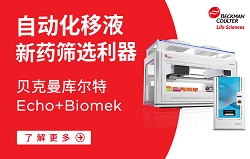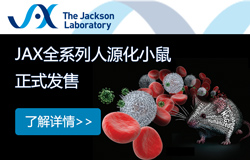Cell-based ELISA for primary cells
1. The 96-well micro-plates are pre-coated with extra cellular matrix.
2. Primary cells are grown in the 96-well plates. Seed 100μl of 10,000-20,000 adherent cells into each well of the black 96-well micro-plates provided and incubate overnight at 37℃ in a cell culture incubator. The cell number used is dependent upon the primary cells and the relative amount of target protein.
Note: Optimal cell numbers should be determined by each laboratory for each assay.
3. These cells may be stimulated with ligands and/or incubated with inhibitors.
4. These cells are then fixed and dehydrated in the wells. Fix cells by replacing 100% medium with 50μl of fixing solution. Add the plate covers and incubate for 20 minutes at room temperature. For maximum sensitivity, it is recommended that the assay be performed immediately after cell fixation. Alternatively apply plate sealers and store the plates containing the fixed cells at 2-8℃ for up to 2 weeks.
5. Remove 100% fixing solution and wash the cells 3 times with 50μl of Wash Buffer.
6. Each wash step should be performed for 5 minutes with gentle shaking. 5. Remove 100% Wash Buffer and add 50μl cell dehydration solution to each well and incubate at room temperature for 5 minutes.
7. Remove 100% cell dehydration solution and wash 3 times with wash buffer for 5 minutes with gentle shaking.
8. Remove 100% wash buffer and add 50μl of blocking buffer. Add the plate covers and incubate for 60 minutes at room temperature.
9. Remove 100% blocking buffer and wash the cells 3 times with 50μl of Wash Buffer. Each wash step should be performed for 5 minutes with gentle shaking.
10. Remove 100% Wash Buffer, and add 50μl of Blocking Buffer. Add the plate covers and incubate for 1 hour at room temperature.
11. Remove 100% blocking buffer and wash the cells 3 times with 50μl of Wash Buffer. Each wash step should be performed for 5 minutes with gentle shaking.
12. The status of target protein in response to treatment is analyzed using an immunoenzymatic labeling procedure. The cells are incubated with one primary antibody: a mono-antibody or poly-antibody specific for the protein of interest.
13. Add 50μl of the primary antibody mixture to each well. Cover with plate sealers and incubate at room temperature for 1-2 hours. In cells known to generate high amounts of target protein, 2-hour incubation is sufficient; however, for maximum sensitivity, an overnight incubation is recommended. For overnight incubation store at 2-8℃.
14. Remove the primary antibody mixture and wash the cells 3 times with 50μl of Wash Buffer. Each wash step should be performed for 5 minutes with gentle shaking.
15. Add 50μl of the secondary antibody mixture to each well. Cover with plate sealers and incubate for 2 hours at room temperature.
16. The 96-well plates are washed for unbound antibodies away.
17. A secondary antibody labeled with horseradish-peroxidase (HRP) or alkaline phosphatase (AP), respectively.
18. Two spectrally distinct fluorogenic substrates for either HRP or AP may be used for detection.
19. Remove the secondary antibody mixture from each well and wash the cells 3 times with 50μl of wash buffer.
20. Each wash step should be performed for 5 minutes with gentle shaking.
21. Remove the wash buffer from the plate and add 50μl of substrate to each well.
22. Incubate for 20 minutes at room temperature. Protect the plates from direct light.
23. Read the plates using a fluorescence plate reader with excitation at 540 nm and emission at 600 nm.
CALCULATION OF RESULTS
Control wells with no primary antibody (secondary antibody alone) should be included in each experiment. The fluorescence from these wells is the background fluorescence and is subtracted from all sample wells. If normalization is desired, the fluorescence at 600 nm derived from the target protein in each well is normalized to the fluorescence at 450 nm derived from normalization protein. The normalized duplicate readings for each sample are then averaged.
- 美森與您相約CMC-CHINA第七屆中國制藥工業(yè)博覽會(huì)
- 美森攜CTCC細(xì)胞庫與干細(xì)胞技術(shù)亮相東南大學(xué)高研院
- 尚恩生物暑期特惠:胞折扣30%,三大套餐1180元起!
- 尚恩生物推出原代細(xì)胞熱銷款限時(shí)特惠活動(dòng)!
- 賽業(yè)生物直播預(yù)告:細(xì)胞培養(yǎng)的難點(diǎn)與解決方案
- 尚恩生物五一福利局,配套試劑一步到位!
- 細(xì)胞檢測(cè)試劑盒免費(fèi)送,反饋即享100%京東卡好禮!
- 2025動(dòng)物生物育種與繁殖技術(shù)學(xué)術(shù)交流研討會(huì)通知





